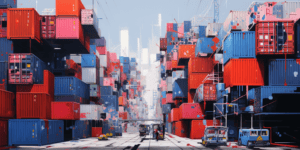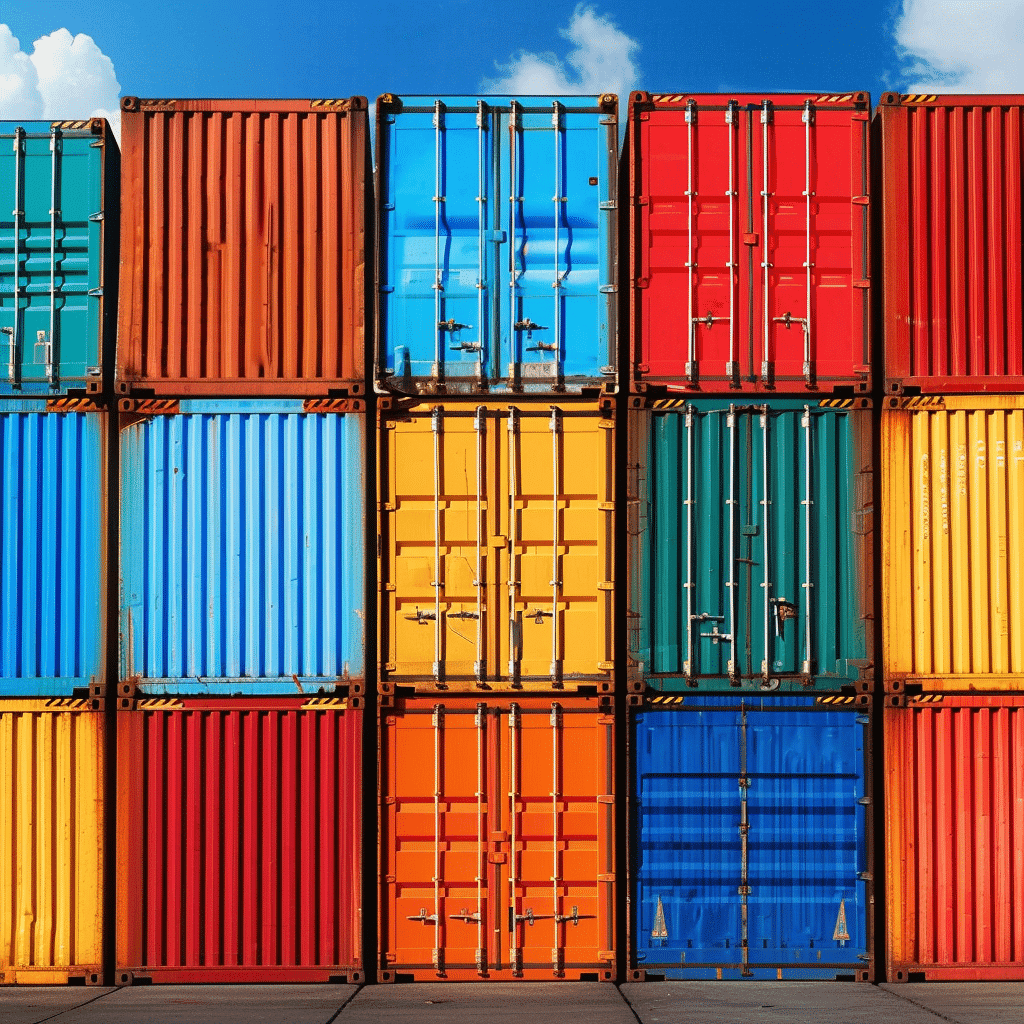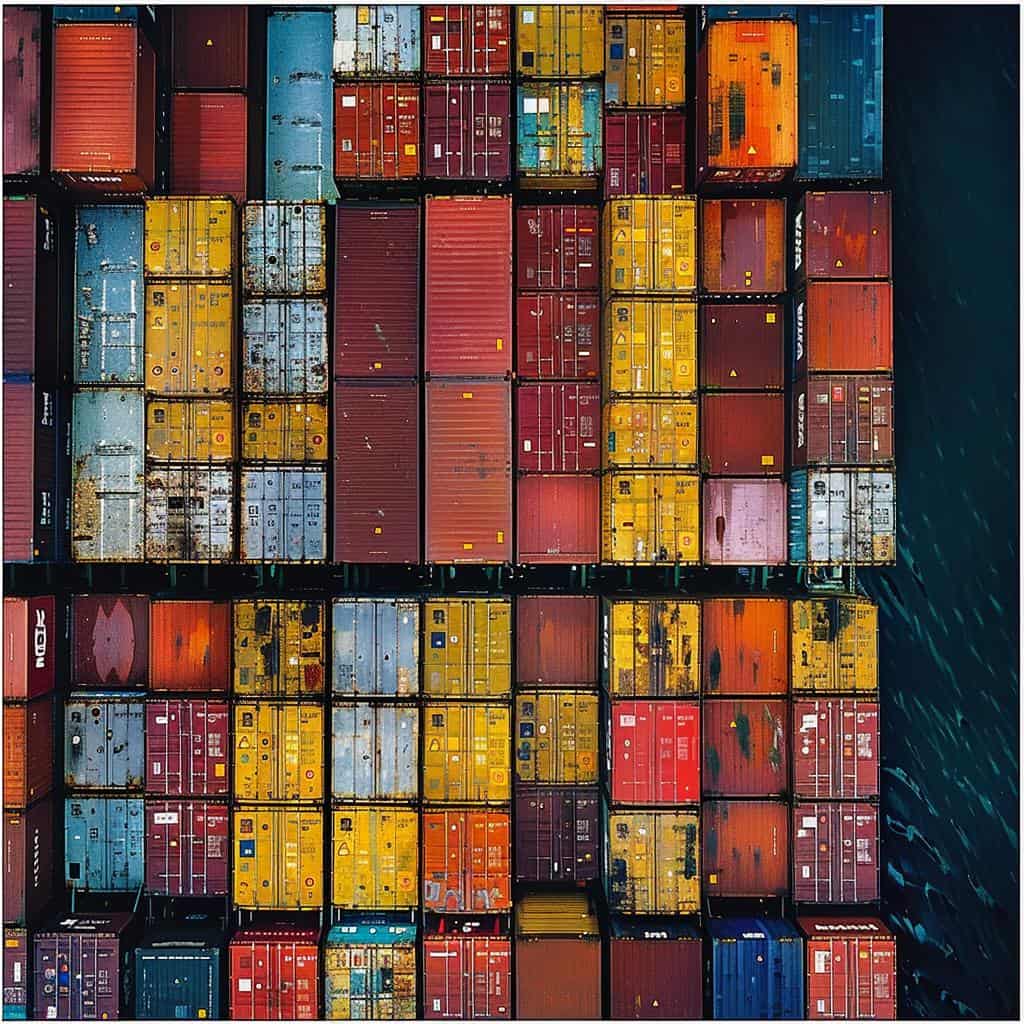In today’s globalized world, shipping containers play a pivotal role in transporting goods across continents. Their standardized sizes and robust design make them a favorite choice for businesses and individuals alike. But beyond their primary role in shipping, these containers have found a myriad of other uses. From chic urban homes to pop-up shops and storage solutions, the versatility of shipping containers is truly remarkable. In this guide, we’ll delve deep into the world of shipping container sizes and dimensions, helping you understand the nuances of this industry staple.
The global shipping industry has seen a revolution with the advent of ISO shipping containers. These standardized steel boxes have not only streamlined international trade but have also led to innovative uses beyond their original purpose. Understanding their dimensions is crucial, whether you’re in the shipping business, looking for a storage space, or considering a container-based construction project.
Standard Shipping Container Dimensions
The backbone of the shipping industry, standard containers, come in various sizes, each tailored to specific needs and cargo types:
20-Foot Shipping Container
Often referred to as a ‘Twenty-foot Equivalent Unit’ (TEU), this mostly insulated container is the industry standard for measuring cargo volume. With dimensions typically measuring 20 feet in length, 8 feet in width, and 8.5 feet in height, it offers 1,360 cubic feet of storage space. These containers can transport up to 24,910 kg of cargo, making them a versatile choice for a wide range of goods, from household items to machinery parts. Their compact size also makes them ideal for urban shipping and storage, where space might be limited.
40-Foot Shipping Container
Double the length cubic capacity of its 20-foot counterpart, this container provides ample space for larger shipments. Typically measuring 40 feet in length, 8 feet in width, and 8.5 feet in height, it’s a favorite for businesses with substantial shipping needs. Its larger size allows for the transportation of bulkier items, and when used for storage, it can comfortably house the contents of a three to four-bedroom home.
45-Foot High Cube
A variation of the standard eight foot container, this high cube container is a foot taller, offering additional vertical space. Measuring 45 feet in length, it’s ideal for transporting taller items or for businesses that require more voluminous storage solutions. The added height can accommodate taller goods, making stacking and organizing more efficient.
Special Container Types and Their Dimensions
Beyond the standard dry container offerings, there are specialized containers designed for specific cargo types:
Reefer Containers
These refrigerated containers are essential for transporting perishable goods. Equipped with advanced cooling systems, they maintain a controlled temperature, ensuring the cargo remains fresh throughout its journey. From fruits and vegetables to pharmaceuticals, reefer containers are the go-to choice for temperature-sensitive goods.
Flat Rack Containers
With collapsible sides, these door containers are perfect for heavy cargo that needs loading from the top or sides. Items like machinery, vehicles, or construction equipment can be easily transported using flat rack containers. Their unique design allows for flexibility in cargo size and shape.
Tank Containers
Designed as a open top container for liquids, these cylindrical containers ensure safe transport. From chemicals to food products like oils and wines, tank containers are equipped with specialized linings and seals to prevent leaks and contamination.
Open Top Containers
Ideal for cargo that’s taller than the standard container height, these come without a fixed roof. This design allows for easy top loading of items like tall machinery or oversized equipment. They’re also equipped with tarpaulins and bows to protect the cargo from external elements.
High Cube Containers
Standing a foot taller than standard containers, these are perfect for voluminous cargo. Their added height allows for more payload capacity and more stacking space, making them a favorite for transporting lightweight, bulky items.
Insulated Containers
Designed with temperature-sensitive cargo in mind, these containers maintain a steady internal temperature regardless of external conditions. They’re essential for transporting goods that might be affected by extreme temperatures, ensuring the cargo remains in optimal condition.
Factors Influencing Container Dimensions
While there are standard dimensions, specific requirements can lead to variations:
Cargo Requirements
Specialized cargo, like liquid or hazardous cargo, might need special containers, tailored to ensure safe transport. For instance, transporting chemicals might require containers with specialized linings to prevent reactions or contamination.
Manufacturing Standards
While ISO containers have set standards, variations can occur based on manufacturing practices and regional regulations. Different countries might have specific requirements for containers entering their ports, leading to slight variations in design and dimensions.
Benefits of Different Container Sizes
Each container type and size offers unique advantages, tailored to specific needs:
Small Containers
Ideal for urban settings or limited storage space, these are perfect for businesses with smaller storage needs or for personal use. Their compact size makes them easy to transport and position, even in tight spaces.
Larger Containers
Best suited for businesses with substantial shipping and storage requirements. They offer economies of scale, reducing the cost per unit of cargo. Their spacious interiors allow for efficient organization and access, making them a favorite for long-term storage or large shipments.
Specialized Containers
From reefer containers to flat racks, specialized containers cater to specific cargo needs. They ensure that goods are transported safely and efficiently, taking into account their unique requirements. Whether it’s maintaining a specific temperature or accommodating an irregular shape, specialized containers offer tailored solutions for diverse shipping needs.

The Importance of ISO Standards in Container Dimensions
The International Organization for Standardization (ISO) plays a pivotal role in ensuring uniformity and consistency in the world of shipping containers.
Global Consistency
ISO standards ensure that containers, regardless of where they are manufactured or used, maintain consistent dimensions. This global uniformity facilitates seamless international trade, as containers can be stacked, shipped, and stored efficiently across different countries and shipping companies.
Safety and Reliability
Adhering to ISO standards ensures that containers are built to withstand the rigors of international shipping. From the quality of the steel used to the structural integrity of the container, ISO standards ensure that goods are transported safely and securely.
Facilitating Intermodal Transport
ISO container standards play a crucial role in intermodal transportation, where goods are transported using multiple modes of transport, like ships, trucks, and trains. Consistent container dimensions mean they can be easily transferred between these modes without the need for repackaging or adjustments.
Understanding the CSC Plate
The Convention for Safe Containers (CSC) Plate is a crucial aspect of shipping containers, ensuring they meet international safety standards.
What is the CSC Plate?
Located on the door of every shipping container, the CSC Plate provides vital information about the container, including its dimensions, maximum weight, and date of manufacture. It’s a testament to the container’s adherence to international safety standards.
Importance in International Trade
The CSC Plate is often checked by customs and port authorities. A valid plate ensures that the container is fit for transporting goods internationally, ensuring the safety of the cargo, the vessel, and the port infrastructure.
Periodic Renewal
The CSC Plate isn’t permanent. It needs periodic renewal, ensuring that the container remains in good condition and adheres to safety standards. This renewal process often involves inspections and, if necessary, repairs.
Innovations in Shipping Container Designs
While traditional shipping containers have remained largely unchanged, there have been innovations to cater to evolving needs.
Smart Containers
With the advent of IoT (Internet of Things), some containers now come equipped with sensors that monitor temperature, humidity, and even the cargo container’s location in real-time. This is especially valuable for sensitive cargo, like pharmaceuticals or electronics.
Eco-Friendly Containers
As sustainability becomes a global priority, there are innovations in creating containers from eco-friendly materials or designs that are more energy-efficient, reducing the carbon footprint of shipping.
Modular and Customizable Containers
Some modern containers are designed to be modular, allowing for easy customization based on the cargo’s needs. This flexibility can be especially beneficial for specialized cargo or for businesses that require unique storage solutions.
The Versatility of Shipping Containers Beyond Shipping
Shipping containers have found uses beyond just transporting goods, showcasing their versatility.
Container Homes
With the rise in sustainable living, many are turning to shipping containers as a cost-effective and eco-friendly housing solution. These homes, often modular and customizable, are gaining popularity in urban and rural settings alike.
Pop-Up Shops and Restaurants
Entrepreneurs are using shipping containers to set up trendy pop-up shops, cafes, or restaurants. Their unique aesthetic, combined with the ease of transportation, makes them an attractive choice for business ventures.
Mobile Offices and Workspaces
Companies are converting containers into mobile offices or workspaces, especially in industries like construction where mobility is crucial.
Future Trends in Shipping Container Usage
As global trade and technology evolve, so will the use and design of shipping containers.
Digital Integration
Future containers might be more deeply integrated with digital systems, allowing for seamless tracking, automated inventory management, and predictive maintenance.
Enhanced Sustainability
As the world moves towards greener solutions, we might see containers made from recycled materials or designs that are more energy-efficient.
Customization and Personalization
With advancements in manufacturing, businesses and individuals might be able to order containers tailored to their specific needs, from dimensions to internal setups.
The History and Evolution of Shipping Containers
The journey of shipping containers, from their inception to their current status as the backbone of global trade, is a testament to human ingenuity. Before the advent of these standardized steel boxes, the world of shipping was vastly different.
The Pre-Container Era
Before the widespread use of shipping containers, goods were manually loaded and unloaded onto cargo ships, a process known as break-bulk shipping. This method was not only time-consuming but also expensive. The lack of standardized container sizes meant that goods were prone to damage, theft, and delays. The need for a more efficient system was evident.
The Birth of the Modern Shipping Container
The modern shipping container owes its design to Malcolm McLean, an American entrepreneur. In the 1950s, he envisioned a standardized container that could be easily loaded, unloaded, and transferred between ships, trucks, and trains. This vision led to the development of the first ISO shipping containers. These containers revolutionized the shipping industry, reducing costs, improving efficiency, and paving the way for the boom in international trade.
Impact on Global Trade
The introduction of standardized shipping container sizes and dimensions facilitated a surge in global trade. Goods could now be transported faster, safer, and cheaper. Ports became more efficient, and the risk associated with handling and storing goods reduced significantly. The container became the symbol of a new era in global commerce.
The Manufacturing Process of Shipping Containers
The creation of a shipping container is a meticulous process, ensuring they are robust, durable, and fit for purpose.
Material Selection
Corrosion-resistant steel is the primary material used in container manufacturing. This choice ensures the container’s longevity, especially given the harsh conditions they often face at sea. The steel container is designed to withstand the elements, ensuring the safety of the goods inside.
Design and Fabrication
Once the raw materials are sourced, the design process begins. Keeping in mind the standard container dimensions, sheets of steel are cut, molded, and welded together. Features like container doors, floors, and safety mechanisms are then added. The container’s unique identification number is stamped, ensuring traceability.
Quality Control and Testing
Every shipping container undergoes rigorous testing to ensure it meets international standards. From weight tests to ensure maximum gross weight limits are adhered to, to water-tightness tests, each container is scrutinized for any flaws or weaknesses.
Environmental Impact and Sustainability
The shipping container industry is acutely aware of its environmental footprint and has made strides in ensuring sustainability.
Repurposing and Recycling
Old containers often find new life in various projects. From chic container homes to innovative farming solutions, repurposing reduces waste and promotes sustainability. These containers provide an eco-friendly alternative to traditional construction materials.
Eco-Friendly Innovations
The industry is continuously innovating to reduce its carbon footprint. From containers with solar panels to those made from recycled materials, the focus is on green solutions. These innovations not only benefit the environment but also offer cost savings in the long run.
Reducing Carbon Footprint
Efforts are underway to make the transportation of containers more eco-friendly. Fuel-efficient ships, optimized shipping routes, and better cargo management practices are being adopted to reduce emissions and promote sustainable shipping.
Security and Safety Measures in Container Shipping
Ensuring the safety and security of goods is paramount in the shipping industry.
Container Seals and Locks
Tamper-evident seals and robust locking door opening mechanisms are standard on every container. These measures ensure that the cargo remains secure throughout its journey, reducing the risk of theft or tampering.
Inspection and Monitoring
Advanced technologies, from X-ray machines to sniffer dogs, are employed to inspect containers. These measures are crucial in preventing the smuggling of illicit goods and ensuring the safety of the cargo.
Addressing Threats
The industry collaborates with international agencies to combat threats. From tackling smuggling rings to implementing advanced tracking systems, efforts are underway to ensure the safe and secure transport of goods.
The Economic Impact of Shipping Containers
The economic implications of container shipping are vast, influencing global trade, industries, and economies.
Boosting Global Trade
Standardized containers have democratized international trade. Businesses, regardless of size, can now access global markets with ease. The efficiency and cost-effectiveness of container shipping have played a pivotal role in this globalization.
Impact on Port Cities
Port cities have seen an economic boom, thanks to container shipping. From job creation to infrastructure development, these cities have transformed into global trade hubs.
Challenges and Opportunities
While container shipping has numerous benefits, it also presents challenges. Port congestion, trade imbalances, and environmental concerns are some issues the industry grapples with. However, these challenges also present opportunities for innovation and growth.
Spotlight on Valtran: Pioneers in Container Solutions
In the dynamic world of shipping containers, certain names stand out for their innovative approach and customer-centric solutions. One such name is Valtran, a company that has redefined the way we perceive and utilize shipping shipping and storage containers everywhere.
Valtran’s Genesis and Growth
Founded with a vision to provide efficient and cost-effective storage solutions, we quickly realized the potential of shipping containers. What started as a modest venture has now blossomed into a leading name in the industry, offering a range of services that cater to diverse needs.
Beyond Shipping: Storage and Office Solutions
Valtran’s genius lies in its ability to repurpose shipping containers for a myriad of uses. Recognizing the robust and secure nature of these containers, the company offers them as storage solutions. Whether it’s a business needing temporary storage during a relocation or a construction site requiring durable, storage containers for equipment, Valtran has a solution.
But storage isn’t the only offering. In a world where flexibility is paramount, we provide mobile office solutions using containers. These offices, equipped with all modern amenities, can be set up in virtually any location, offering businesses unparalleled flexibility.
Environmental Commitment
In line with global trends, Valtran is committed to sustainability. By repurposing shipping containers, the company promotes recycling and reduces the need for new construction materials. This not only benefits the environment but also offers clients an eco-friendly solution.
The Future for Valtran
With a solid foundation and a reputation for excellence, the future looks bright for us. As the demand for flexible, cost-effective, and sustainable solutions grows, the company is poised to lead the way, showcasing the versatility of shipping containers in the process.
The World Inside a Box
Shipping containers, often seen stacked high on cargo ships or lined up at ports, represent more than just steel boxes. They are the unsung heroes of global trade, ensuring that goods reach their destinations safely and efficiently. Their standardized sizes and dimensions, from the compact 20-foot units to the expansive 40-foot high cubes, cater to a myriad of needs, making them indispensable in today’s interconnected world.
But as we’ve explored, their role doesn’t end at transportation. The versatility of these containers extends to innovative housing solutions, pop-up businesses, and mobile offices, among others. Companies like Valtran have further showcased their potential, offering customized solutions that go beyond traditional standard shipping containers.
Understanding the sizes and dimensions of these containers is not just essential for those in the shipping industry. It’s valuable knowledge for anyone looking to tap into the vast potential these containers offer, be it for storage, business, or creative endeavors.
As we move forward, the humble shipping container will undoubtedly continue to shape our global landscape, proving that sometimes, the most extraordinary possibilities can be found within the confines of a simple box.


